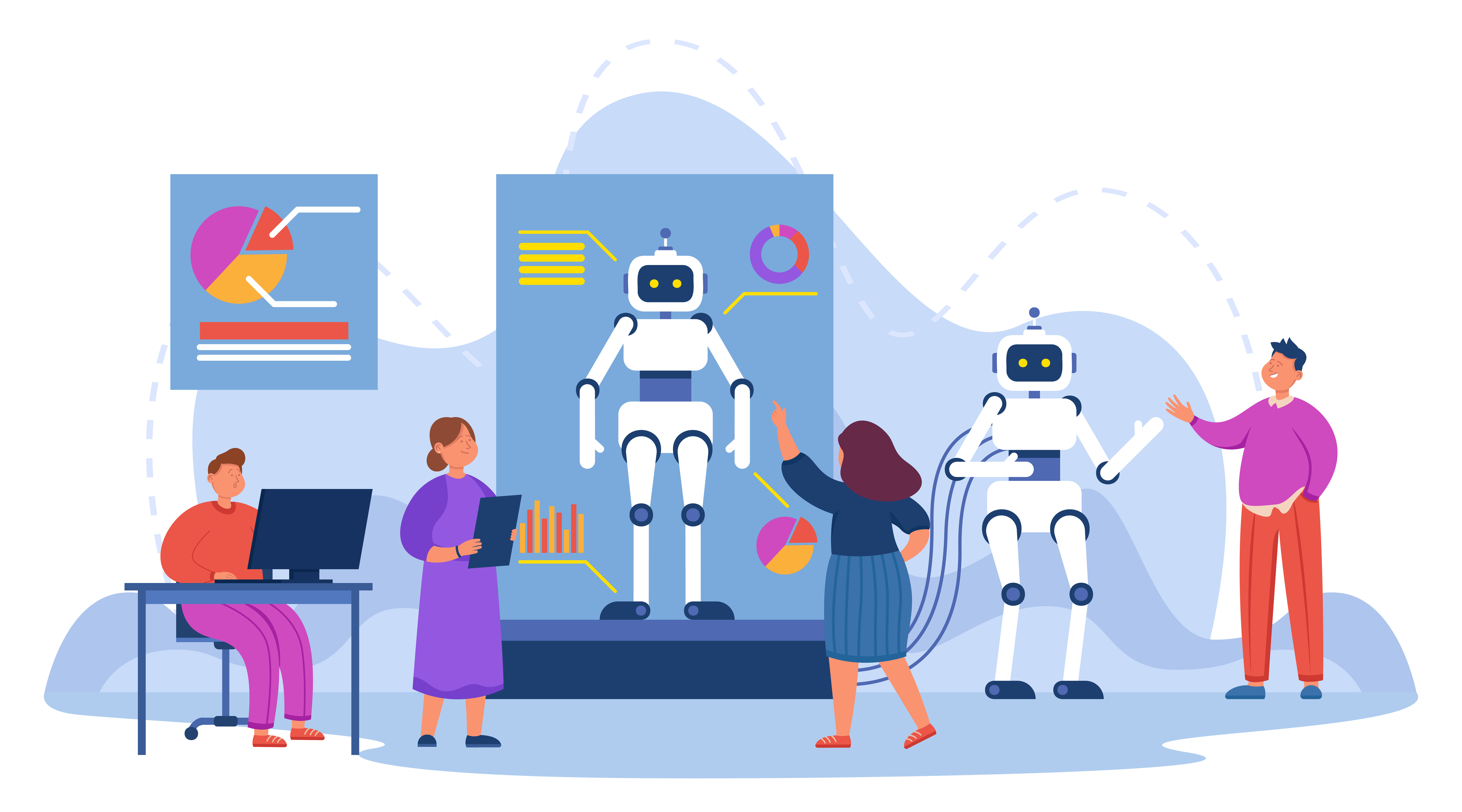Prof. Bram Vanderborght (Brubotics, Vrije Universiteit Brussel & imec.) explains how robots and people interact. As professor Rodney Brooks stated: “How robots and people interact is going to be crucial for a successful world.” The EURobin science domain “Interact” deals with safe, energy-efficient and effective physical interaction with the world, which is fundamentally different from agents in the digital world, since physical robots have much more potential to cause significant physical harm and damage.
On the other hand this also offers unique capabilities to assist humans in the three targeted application areas and beyond. The term embodied AI in robotics captures these specific challenges and opportunities for AI systems that arise from interacting with complex situations and the physical world. Therefore, this science domain will be the foundation to develop robots that autonomously reason, plan and act in an uncertain world, while executing trustworthy and safe interactions with humans and effective interactions with the environment. To interact with and assist humans, while operating in an unknown and dynamic environment, robots need capabilities that reach close to the the performance of their biological archetypes in areas such as sensing, processing and actuation. Besides, robotics is an integration of cutting-edge technologies requiring advancements in materials, mechanics, new sensors, computer vision, and electronics such as 5G spur development, all of which need to be adapted to the specific needs of the robotic application. Inspiration from nature often fuels such new core robotic technologies.
In order to interact with the world for especially collaborative applications as requested in the three application domains, over the past two decades Europe led the development of the so-called collaborative and soft robotics fields. Therefor new steps need to be taken to achieve embodied intelligence by exploiting smart but also more sustainable materials and robot designs where, as in living organisms, actuation, energy, sensing, reflexes, nervous and control functions are mostly embedded in and distributed throughout the body, instead of the discrete lumped components in current mechatronic systems. This necessitates the exploration of new and smart materials including self-healing materials, their production techniques and control/AI algorithms as well as new modeling methodologies to understand their multi-physical nature in order to effectively control their behaviour. For increasing levels of physical interaction also the sensing and its processing need to advance to enable safety, productivity, dexterity, intention and intuition capabilities. These capabilities are paramount to allow robotic hands and grippers to not only grip but also manipulate objects as needed in e.g. the manufacturing (for continuum and flexible objects such as cables) and personal robotics challenges (e.g. the clothes). Moreover, it will be important to direct the development of a new generation of electronics/mechatronics to support and enable circular economy and sustainability (EUGreenDeal) and make the complete system including storage, sensing, processing, and actuation energy-efficient that will also substantially benefit power autonomy in mobile robotics applications.
Current systems mostly work together with a single human or are embedded in a static, hierarchically-controlled system like a manufacturing plant. Human populations on the other hand are very flexible and highly cooperative, their ties in these networks often are dynamic, changing in response to the behavior of one's social partners and their needs. Robots designed for interaction have increased robustness through redundancy and higher flexibility for a wide variety of tasks, moreover multiple robots can solve problems faster using parallelism. Therefore we need physically interacting multi-robot systems with different capabilities exploiting the resources on the Cloud for extending their computational capabilities and functionalities towards more resilient and adaptive control strategies. These fundamental developments will facilitate complete scenarios in outdoor logistics (especially the handover/delivery of objects or in cooperative load manipulation) and manufacturing challenges (e.g. collaborative assembly), enabling that aerial, legged, and wheeled robots to physically collaborate with higher efficiency instead of only navigating in a shared environment like in the current state-of-the-art.
In order to design, test, and train control and AI algorithms and predict robot behaviours for the different challenges, reliable simulators and digital twins are needed that realistically represent the physical world. This also enables interaction with robots in the cyber-physical space using AR and VR technologies. First the challenges can be simulated and control strategies fine-tuned, before testing the developments on the real hardware platforms.
As one of the four scientific pillars of EURobin to realize the three application areas, we will boost physical interaction capabilities to increase energy efficiency and interaction safety and reliability. This will be achieved by combining smart materials, next-gen electronics and actuators, multi agents and physics-enabled digital twins.

